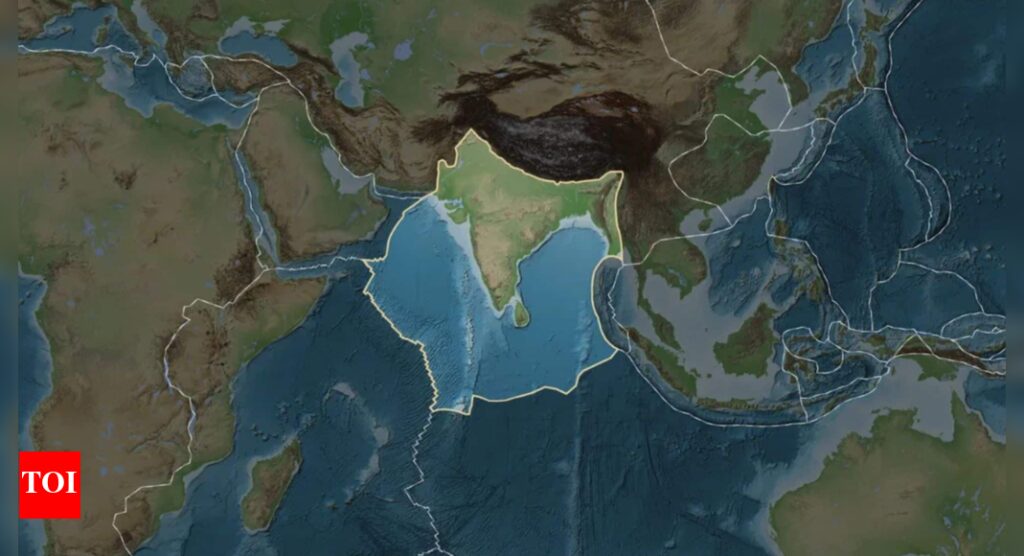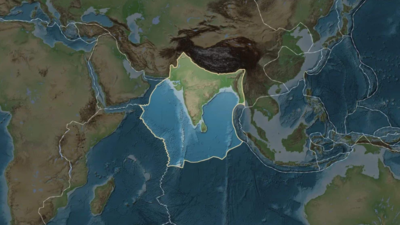In a groundbreaking discovery that could rewrite our understanding of Earth’s inner dynamics, geologists have revealed that the Indian Plate, the massive slab of Earth’s crust carrying the subcontinent, is splitting in two. A part of it is peeling away and sinking deep into the Earth’s mantle, a process known as delamination. This hidden and previously undetected geological activity could have far-reaching consequences, not just for India but for the entire planet. It may alter earthquake patterns, reshape landscapes, and challenge long-standing scientific theories about plate tectonics. The findings have stunned experts and sparked urgent calls for deeper research into Earth’s shifting crust.
How is this shift happening
The Indian Plate has long been a key player in one of the world’s most dramatic geological collisions, the crash into the Eurasian Plate that formed the Himalayas. But now, scientists have found something even more astonishing beneath its surface.
Using advanced seismic analysis and helium isotope tracking in the springs of Tibet, researchers have uncovered evidence of delamination, a rare process where the dense lower part of a tectonic plate peels away and sinks into the Earth’s mantle. This means the Indian Plate is effectively tearing apart, creating a massive vertical rift deep underground.
“We didn’t know continents could behave this way,” said Douwe van Hinsbergen, a geodynamicist at Utrecht University. “This changes some of our most fundamental assumptions about solid earth science.”
Earthquake hotspots may get hotter
The discovery has serious implications for earthquake risk in the Himalayan region, already one of the most seismically active zones on Earth. According to Stanford geophysicist Simon Klemperer, the tearing and sinking of the plate could create new stress points in the Earth’s crust, triggering more frequent and potentially more powerful quakes.
One major concern is the Cona-Sangri Rift in the Tibetan Plateau, a deep fracture that could be directly tied to the ongoing delamination. If this connection is confirmed, regions along this rift could face heightened seismic danger in the years ahead.
A discovery that shifts the scientific ground
The study, published in the American Geophysical Union, not only reveals the Indian Plate’s splitting but also suggests that other continental plates might be undergoing similar processes. Scientists are now scanning regions worldwide for signs of comparable plate behaviour, a move that could revolutionise how we understand everything from mountain formation to plate tectonics itself.
“This could be a missing piece in our puzzle of how continents evolve and interact,” said Fabio Capitanio, a geodynamicist at Monash University, who cautions that the findings are still early-stage. “It’s just a snapshot, and much more data is needed to understand the full picture.”
What will be the effect of this shift on Earth sciences
If confirmed, this discovery could explain long-standing mysteries about how and why certain mountain ranges form, and even help scientists make better predictions about future earthquakes and geological hazards. More importantly, it opens a new frontier in Earth science, one that challenges old models and demands a fresh look at how our planet works.
For now, scientists continue to monitor seismic waves and chemical signatures in the region, hoping to unravel the evolving story of a continent in motion and the silent, subterranean split that could shake the world.










More Stories
Dramatic scenes as wildfire sweeps across New Jersey, mass evacuations triggered
In photos: From classrooms to cabinets, how India came together for Earth Day 2025
IISc, French scientists study droplets in microgravity, to aid bio printing in space